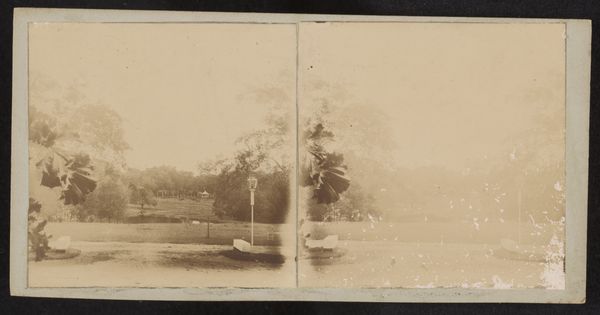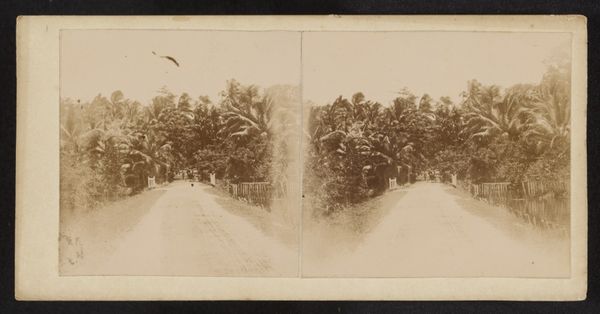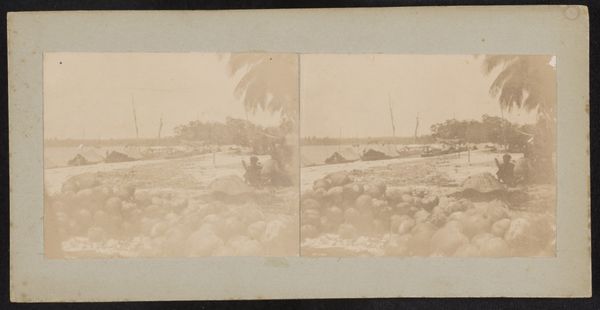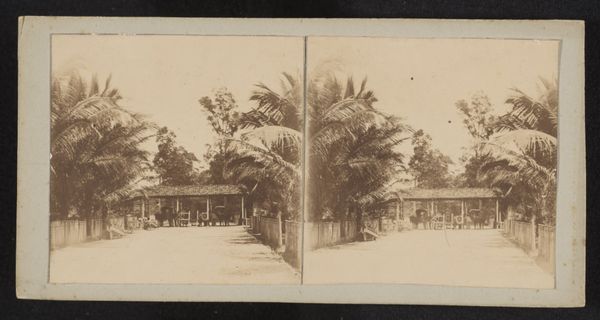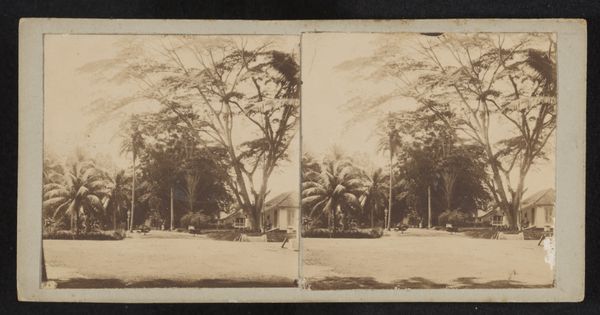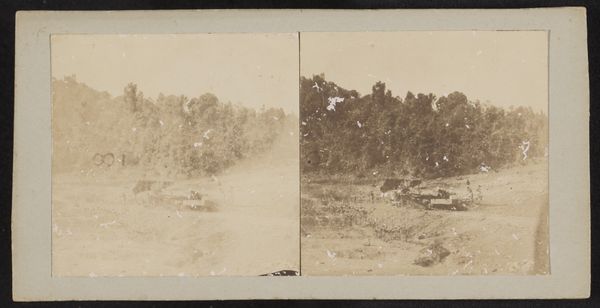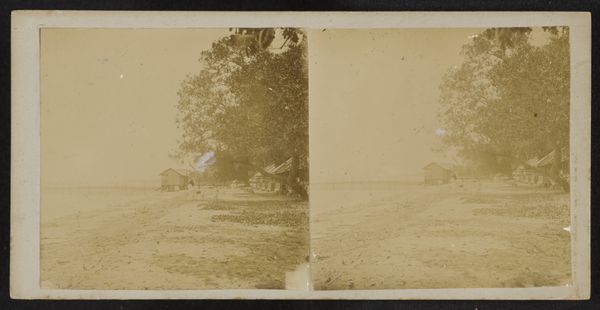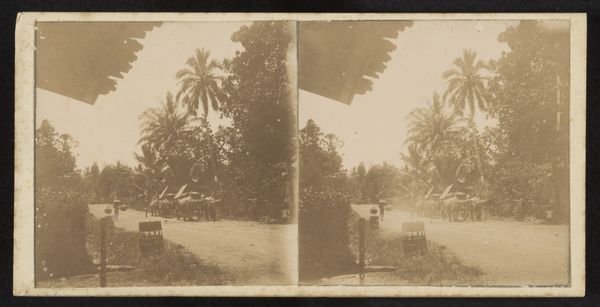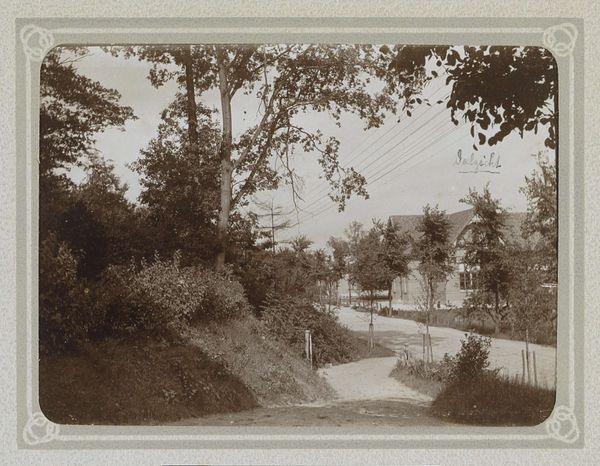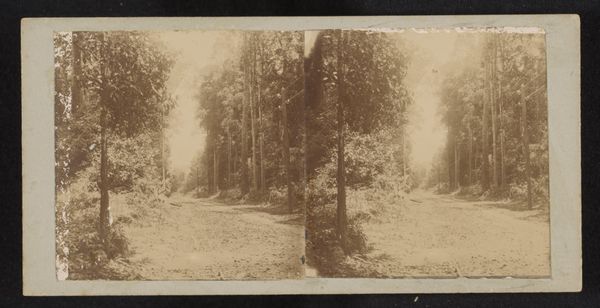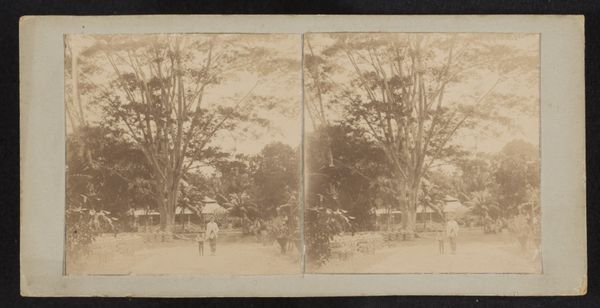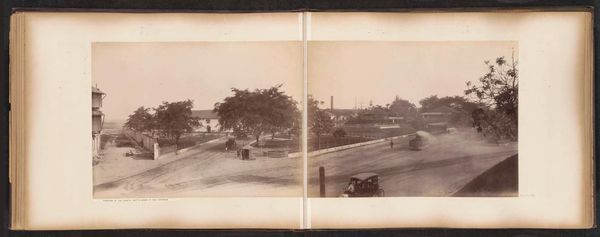
photography
#
landscape
#
street-photography
#
photography
Dimensions: height 80 mm, width 80 mm, height 88 mm, width 178 mm
Copyright: Rijks Museum: Open Domain
Curator: It is my pleasure to introduce you to 'Weg naar het strand,' or 'Road to the Beach' as translated in English. This compelling piece is a photograph by Robert Julius Boers, dated between 1900 and 1922, and is held here at the Rijksmuseum. Editor: The sepia tones immediately create a sense of nostalgia, like an echo of a bygone era. There’s a stillness that makes me think of heat and quiet perseverance. Curator: It certainly encapsulates a sense of tropical stasis. Looking closer, we can explore this artwork through the lens of Dutch colonialism. This photograph freezes a specific colonial gaze during a crucial epoch, showcasing what could be an avenue near settlements and commercial hubs in Southeast Asia. What narratives are deliberately foregrounded or tactfully hidden? Editor: You're right. Those repeated palms—they're such classic markers of "exotic" locales in the Western imagination. And the road itself—a path towards extraction and control. What is the historical weight of such stylized representations, and who paid the real price to support these cultural fantasies? Curator: Exactly. We can think of the photographic image as both documenting and shaping a worldview. Note how the structures – perhaps dwellings – appear subordinate to nature yet abut to that manmade avenue. This poses critical inquiries concerning spatial hierarchy and cultural impositions during colonial reign. It highlights critical aspects about imposed and artificial mobility during imperial control. Editor: The photograph acts as both a preservation and a document. The light is soft, but I’m curious about the obscured stories just outside the frame. What labor and experiences shaped that road's construction? Whose memories are buried under the colonial enterprise and erased by idealized imaginaries? Curator: Right. Analyzing the cultural politics enacted through this single, sepia-toned picture unlocks dialogues regarding exploitation, resilience, and representation, especially pertinent in the context of present postcolonial criticism. Editor: So, a picture that appears calm speaks volumes, prompting important self-reflection. Curator: Yes, and ideally initiating discussions and inquiry as it meets its audiences. Thank you for considering that colonial legacy that this single photograph can offer.
Comments
No comments
Be the first to comment and join the conversation on the ultimate creative platform.
